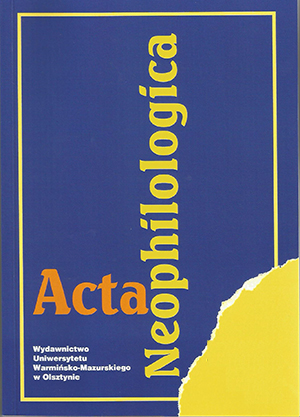LEXICAL VS CONCEPTUAL BLENDS: HOW TO RECONCILE THE TWO?
LEXICAL VS CONCEPTUAL BLENDS: HOW TO RECONCILE THE TWO?
Author(s): Agnieszka Mierzwińska-HajnosSubject(s): Language studies, Language and Literature Studies, Philology
Published by: Wydawnictwo Uniwersytetu Warmińsko-Mazurskiego w Olsztynie
Keywords: conceptual blending; lexical blends; the Brandt and Brandt model
Summary/Abstract: The objective of this paper is to apply a revised model of conceptual integration asproposed by Brandt and Brandt [Brandt and Brandt 2005, 3, 216-249; Brandt 2013]to the analysis of recently coined neologisms expressed in the form of lexical blends.Assuming that lexical blending is one of the most productive word-formation processes[Lehrer 2003, 15, 369-382; Lehrer 2007, 115-133; Gries 2004, 415-428], the questionarises whether it should be considered solely for morphological analysis, or ratherviewed as a cognitively entrenched phenomenon. The case of Polish Miserikordyna thatis to be scrutinized within the course of the proposed analysis opts for the latter, thusgiving conceptual blends priority over lexical blends. To prove this, the analysis of theproposed neologism will be carried out with the aid of a six-space model as delineatedby Line Brandt and Per Aage Brandt. It is going to be proved that lexical blends involvemore than a morphological operation since the process of their creation starts at theconceptual level and is inextricably bound with on-line processing and on-line decoding.Therefore, the Brandt and Brandt model seems an appropriate framework as it maycontribute to a more thorough interpretation and ultimate understanding of variousinstances of such lexical blends.
Journal: Acta Neophilologica
- Issue Year: 1/2017
- Issue No: XIX
- Page Range: 55-68
- Page Count: 14
- Language: English

